As the proud owner of three wonderful cats—Toni, Jack, and Barfi—I’ve had my fair share of experiences with the feline behavior of scratching furniture. Scratching is a natural and necessary behavior for cats, but it can be quite frustrating for pet owners when our beloved furniture becomes the target. In this article, I’ll delve into the various reasons ” Why Do Cats Scratch Furniture ?, using my personal experiences and insights to provide a comprehensive understanding of this behavior. We’ll explore the instinctual needs, psychological benefits, breed tendencies, and practical solutions, all while sharing the delightful quirks of my own furry companions.
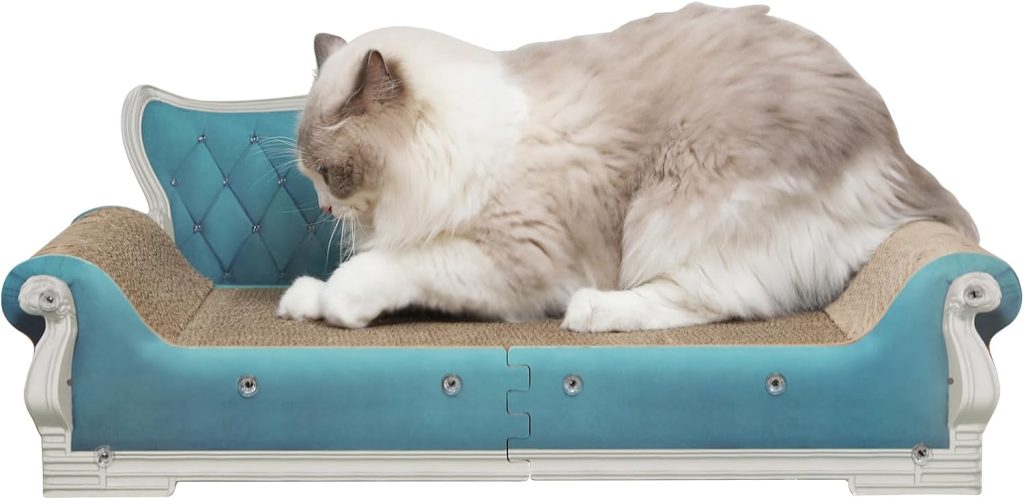
The Instinctual Need to Scratch:
Territorial Marking
Cats are inherently territorial creatures, and scratching serves as a primary method for them to mark their territory. When Toni, Jack, and Barfi scratch my furniture, they are not just sharpening their claws; they are leaving behind visual and scent markers. Cats have scent glands in their paws, and by scratching, they deposit their unique scent on objects. This behavior communicates to other cats that this space is claimed. In a multi-cat household like mine, this behavior is even more pronounced as each cat tries to establish its own territory.
I’ve observed that Toni, my eldest, often scratches the same spot on the armchair every morning. This ritualistic behavior is her way of reaffirming her claim on that piece of furniture. It’s fascinating to see how consistent she is, always returning to the same spot, as if it’s a morning ritual she can’t skip. This repetition is a clear indication of how important territorial marking is in her daily routine.
Claw Maintenance
Another primary reason cats scratch is to maintain their claws. Scratching helps remove the outer sheath of their claws, keeping them sharp and healthy. For indoor cats like mine, this behavior is crucial since they don’t have access to natural surfaces like trees to scratch on. Providing them with appropriate scratching posts can help redirect this behavior from furniture to more suitable surfaces.
Jack, my adventurous middle cat, is particularly diligent about his claw maintenance. He loves to scratch the wooden legs of our dining table. While this isn’t ideal, I’ve learned to redirect his attention to a nearby scratching post made of similar material. By observing his preferences and providing alternatives, I’ve been able to protect my furniture while allowing Jack to fulfill his natural need for claw care.
Physical Exercise
Scratching is also a form of exercise for cats. It helps them stretch their muscles and keep them toned. When I see Jack stretching and scratching the side of the couch, I know he’s getting a good workout. This activity is essential for their overall physical health and well-being.
Barfi, the youngest and most energetic of my cats, often combines scratching with an impressive full-body stretch. She extends her front legs as far as she can, arches her back, and digs her claws into the scratching post with a satisfied purr. This daily routine not only keeps her claws in good condition but also ensures she gets the physical exercise she needs to stay agile and healthy.
Psychological and Emotional Benefits:
Stress Relief
Cats scratch as a way to relieve stress and frustration. Changes in their environment, new pets, or even minor disruptions in their routine can cause anxiety. Scratching provides a soothing and familiar activity that helps them cope with these changes. I’ve noticed that Barfi tends to scratch more when we have guests over, indicating that it helps her deal with the increased activity and unfamiliar faces.
During a particularly stressful period when we were renovating our living room, all three cats increased their scratching behavior. The noise and presence of strangers in their territory were clearly unsettling. I made sure to provide extra scratching posts and interactive toys to help them manage their stress. By acknowledging their need for stress relief and providing appropriate outlets, I was able to help them navigate the disruptions with less anxiety.
Play and Stimulation
For many cats, scratching is simply fun. It’s an engaging activity that stimulates their mind and body. Toni, for example, often combines scratching with playful pouncing and chasing, turning it into a game. Providing toys and scratching posts can help keep them entertained and reduce the likelihood of them targeting furniture.
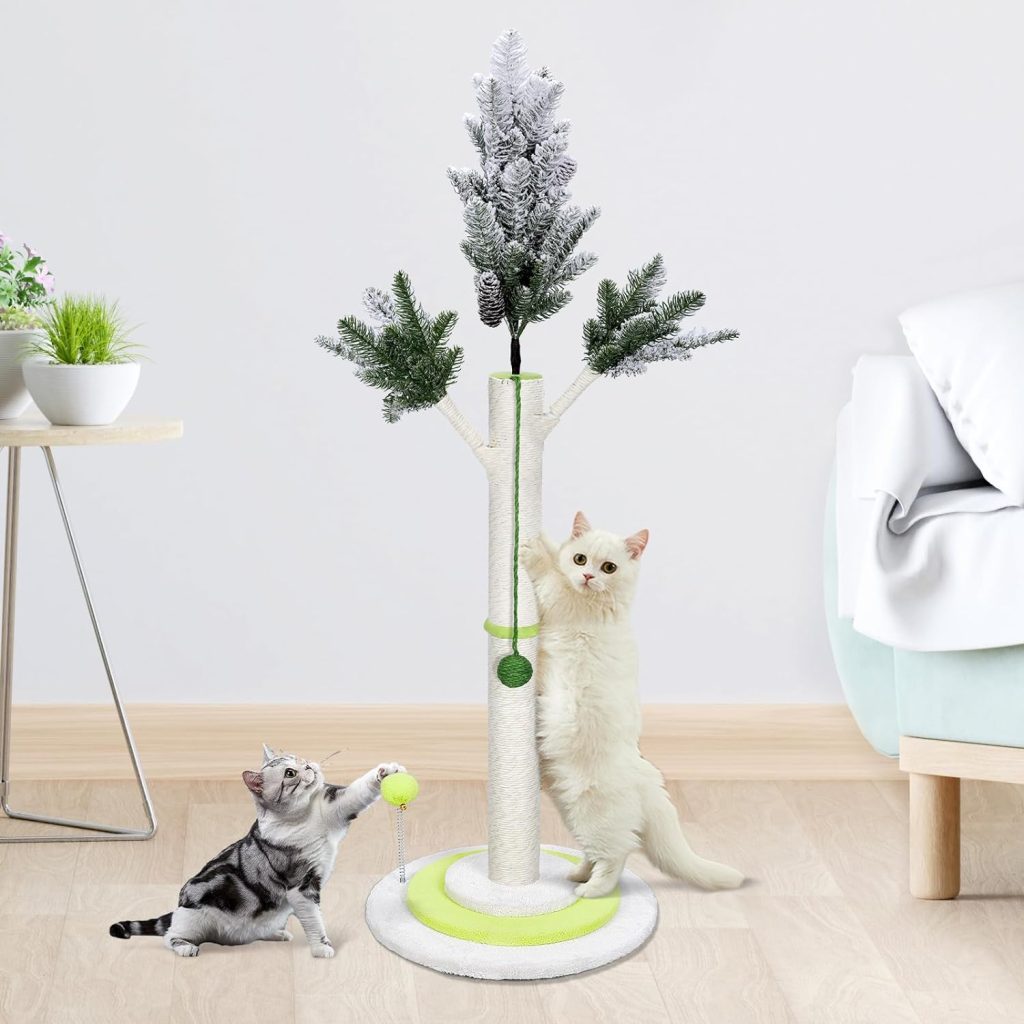
Jack, with his playful nature, often turns scratching into an interactive game. He’ll scratch the post vigorously and then dart away, only to return moments later to repeat the process. This playful behavior is not only entertaining to watch but also crucial for his mental stimulation. Ensuring that your cat has plenty of opportunities to play and scratch can significantly reduce unwanted scratching on furniture.
The Role of Breed and Personality:
Individual Preferences
Just like people, each cat has its own personality and preferences. Some cats may prefer certain textures or angles for scratching. Toni likes vertical scratching posts, while Jack prefers horizontal surfaces. Understanding these preferences can help in choosing the right scratching aids to satisfy their needs and protect your furniture.
In my household, I’ve observed that Toni has a particular fondness for sisal-covered posts. She will ignore other materials in favor of this rough texture that mimics tree bark. Jack, on the other hand, enjoys scratching cardboard pads that lay flat on the ground. By paying attention to these individual preferences, I’ve been able to provide the right scratching options for each cat, which helps keep my furniture safe.
Breed Tendencies
Certain breeds may have stronger scratching tendencies due to their genetic makeup. For example, Bengal cats are known for their high energy and need for physical activity, which can translate into more frequent scratching. While none of my cats are Bengals, I’ve seen this trait in action with friends’ pets, highlighting the importance of considering breed-specific behaviors.
Siamese cats, like my friend’s pet Luna, are also known for their vocal and active nature. Luna’s scratching behavior is more intense and frequent compared to my more laid-back domestic shorthairs. Understanding these breed tendencies can help in providing the right environment and tools to satisfy their natural behaviors.
Solutions and Prevention:
Providing Alternatives
One of the most effective ways to prevent furniture scratching is to provide plenty of alternative scratching surfaces. In my home, we have a variety of scratching posts, pads, and even cat trees strategically placed to attract my cats. By offering different textures and shapes, I ensure that Toni, Jack, and Barfi have appealing options to choose from.
I’ve placed scratching posts near the areas where they initially started scratching the furniture. This tactic has been particularly effective with Toni, who now prefers the tall, sturdy post next to the couch instead of the couch itself. Providing multiple options in various locations helps cater to their need for territorial marking while protecting the furniture.
Positive Reinforcement
Using positive reinforcement can encourage cats to use designated scratching areas. Whenever I catch one of my cats using their scratching post, I reward them with treats or praise. Over time, this reinforces the behavior and reduces the likelihood of them scratching the furniture.
Barfi responded exceptionally well to this approach. Initially, she would scratch the side of the bed, but by consistently rewarding her for using a nearby scratching pad, she gradually shifted her behavior. Positive reinforcement not only helps redirect their scratching but also strengthens the bond between you and your cat.
Protective Measures
For particularly problematic areas, I’ve found that using protective covers or double-sided tape can deter scratching. Cats dislike the sticky texture, so they avoid these spots. Additionally, trimming their claws regularly can minimize damage if they do scratch the furniture.
We used double-sided tape on the corners of our favorite armchair where Jack liked to scratch. The unpleasant texture discouraged him, and he eventually stopped targeting that area. Claw caps are another option for those who want to protect their furniture without restricting their cat’s natural behavior.
Understanding the Underlying Causes:
Health Issues
Sometimes, excessive scratching can indicate underlying health issues. If a cat suddenly starts scratching more than usual, it could be a sign of skin problems, allergies, or even pain in their paws. It’s important to monitor their behavior and consult a veterinarian if you notice any significant changes.
Toni once had a bout of excessive scratching, which turned out to be due to a skin allergy. After consulting with our vet and making the necessary dietary adjustments, her scratching behavior normalized. It’s crucial to rule out medical issues if you notice any sudden or intense changes in your cat’s behavior.
Environmental Factors
Changes in the home environment can also impact scratching behavior. Moving to a new house, introducing a new pet, or even rearranging furniture can cause stress and lead to increased scratching. When we moved to a new apartment, all three of my cats exhibited more scratching as they adjusted to the new surroundings. Providing familiar items and maintaining a consistent routine helped them settle in and reduced their scratching.
When we introduced a new kitten to the household, the increased scratching from Toni and Jack was noticeable. To ease the transition, we ensured that each cat had their own space and familiar items, such as their favorite blankets and toys. Gradually, as they became accustomed to the new addition, their scratching behavior returned to normal.
Creating a Scratch-Friendly Home:
To create a scratch-friendly home, consider the layout and placement of scratching posts and pads. Strategic placement can make a significant difference in whether your cats choose their designated scratching areas over your furniture.
Placement of Scratching Posts
Place scratching posts in areas where your cats already like to scratch. If they frequently scratch the side of the couch, place a post nearby. Cats often scratch when they wake up, so positioning posts near their favorite sleeping spots can be effective.
In my home, I have a scratching post next to the living room couch, another near the entrance to the bedroom, and a third in the hallway. This ensures that no matter where my cats are, they have a nearby option for scratching.
Variety of Textures
Offer a variety of scratching surfaces to cater to different preferences. Some cats prefer sisal, others like carpet, and some may enjoy cardboard. By providing multiple textures, you increase the chances that your cats will find a surface they love.
Toni loves sisal, Jack prefers cardboard, and Barfi enjoys carpet-covered posts.
By catering to their individual preferences, I’ve been able to significantly reduce the instances of them scratching inappropriate surfaces.
Engaging Toys and Activities:
Keeping your cats engaged and mentally stimulated can also help reduce unwanted scratching. Boredom can lead to increased scratching, so providing a variety of toys and activities is crucial.
Interactive Toys
Interactive toys that mimic the movement of prey can keep your cats entertained and reduce their need to scratch furniture out of boredom. Feather wands, laser pointers, and battery-operated toys that move on their own can provide hours of entertainment.
Barfi, with her high energy levels, particularly enjoys chasing feather wands. This not only helps her burn off energy but also keeps her mind engaged, reducing the likelihood of her scratching the furniture.
Puzzle Feeders
Puzzle feeders can also be a great way to keep your cats occupied. These feeders require cats to work for their food, providing mental stimulation and satisfying their hunting instincts.
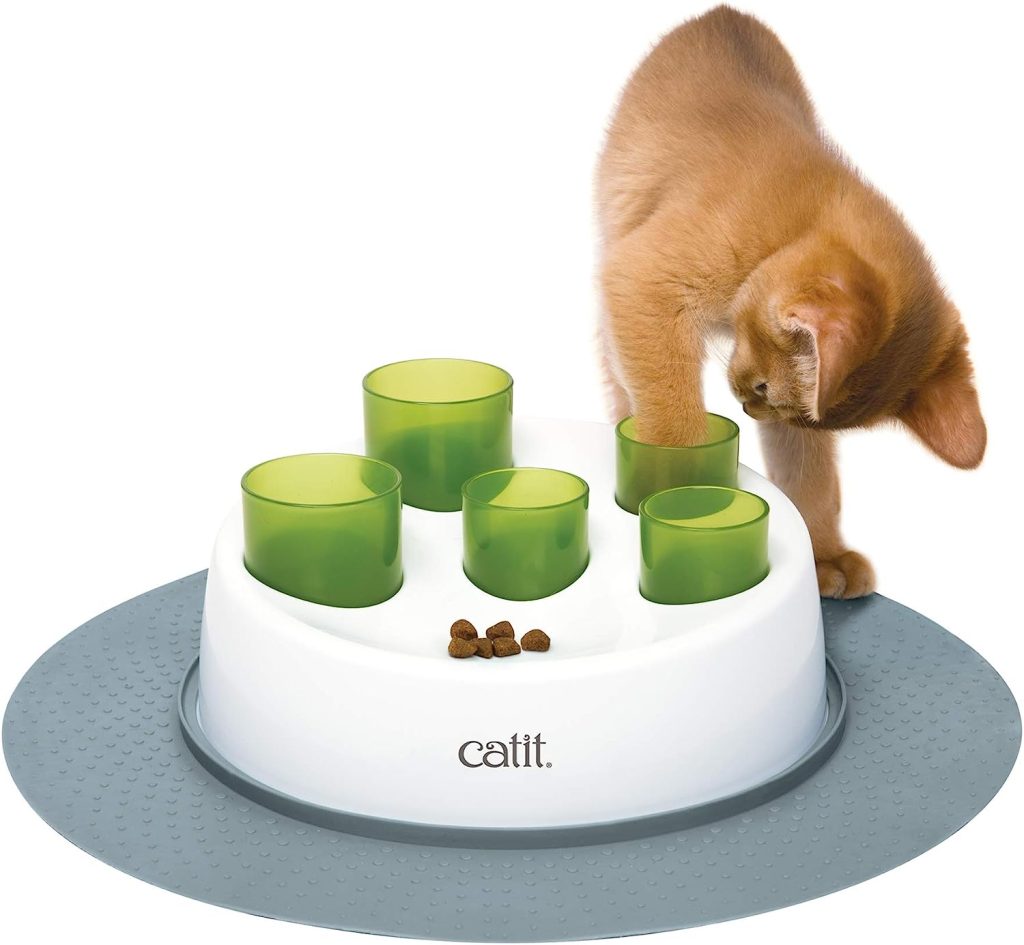
Jack enjoys using a puzzle feeder that dispenses treats as he manipulates it. This activity keeps him busy and helps curb his scratching behavior, as he’s too preoccupied with the puzzle to focus on the furniture.
Training and Behavior Modification:
Training your cats to use scratching posts instead of furniture involves patience and consistency. Here are some effective training techniques:
Redirecting Behavior
Whenever you catch your cat scratching the furniture, gently redirect them to an appropriate scratching post. You can do this by picking them up and placing them near the post or by using a toy to guide them there.
When Toni used to scratch the couch, I would gently pick her up and place her next to her scratching post. Over time, she learned that the post was the appropriate place to scratch, and her behavior improved.
Using Catnip
Sprinkling catnip on scratching posts can make them more attractive to your cats. The scent of catnip can entice them to use the post instead of your furniture.
I regularly sprinkle catnip on the scratching posts, which my cats find irresistible. This simple trick has been highly effective in encouraging them to use the posts.
Preventing Damage to Furniture:
In addition to providing alternatives and training, there are measures you can take to protect your furniture from scratching damage.
Furniture Covers
Using furniture covers or slipcovers can protect your upholstery from cat scratches. These covers can be removed and washed, making them a practical solution for keeping your furniture in good condition.
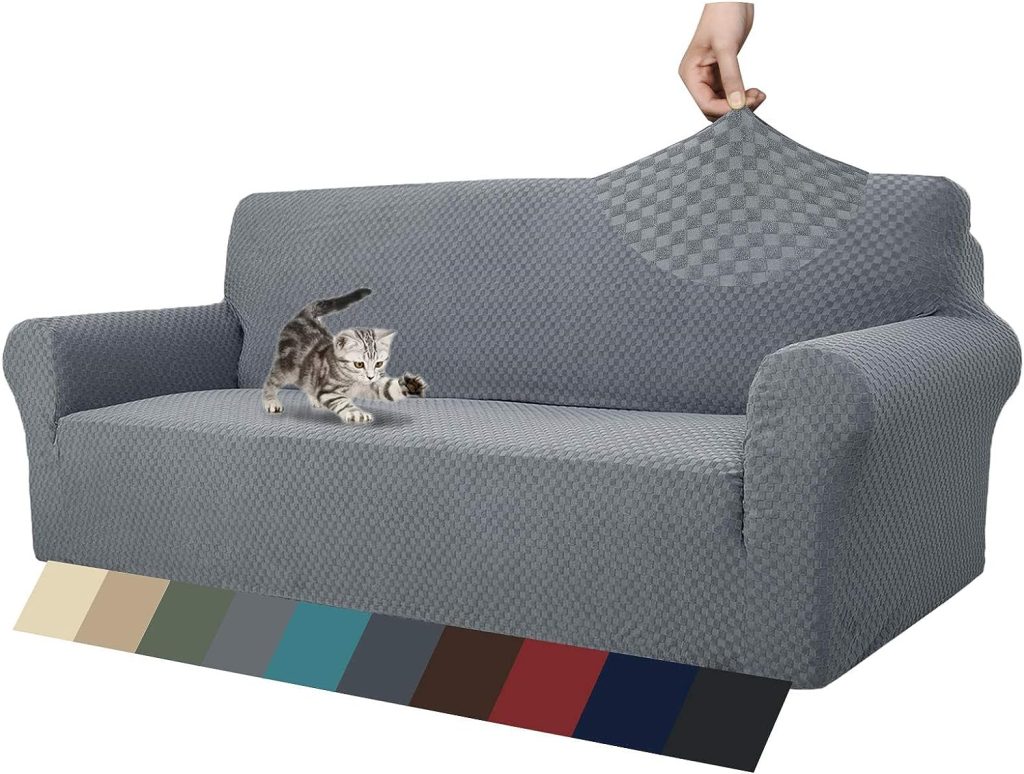
We use slipcovers on our living room couch, which not only protects the fabric but also makes cleaning up pet hair and scratches much easier.
Double-Sided Tape
Applying double-sided tape to the areas where your cats like to scratch can deter them. Cats dislike the sticky texture, and this can discourage them from targeting those spots.

We applied double-sided tape to the corners of our armchair, which was Jack’s favorite scratching spot. The unpleasant texture deterred him, and he eventually stopped scratching there altogether.
Regular Claw Maintenance
Regularly trimming your cat’s claws can help minimize the damage caused by scratching. Shorter claws are less likely to cause significant damage to furniture.
Claw Trimming
Trimming your cat’s claws every few weeks can keep them at a manageable length. Use a pair of cat-specific nail clippers and be careful not to cut too close to the quick, which can cause pain and bleeding.
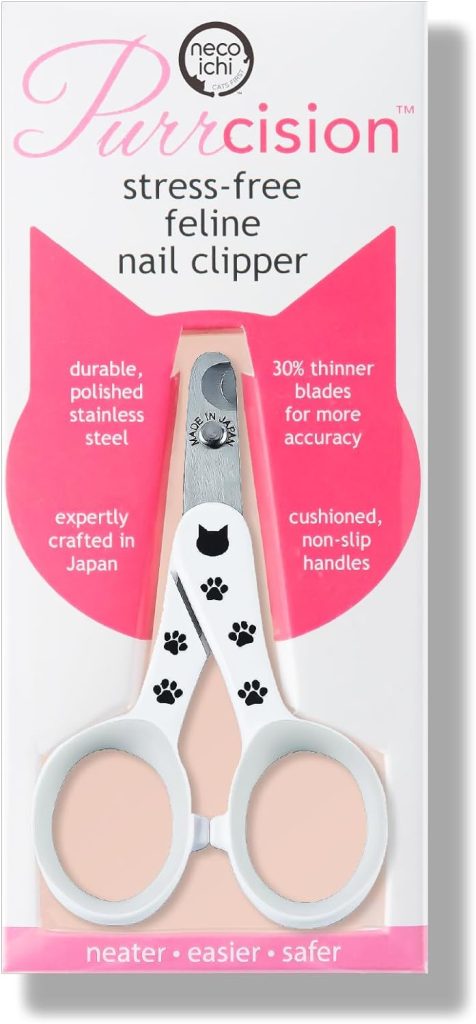
I trim my cats’ claws every month, which has significantly reduced the damage to our furniture. While they still scratch, the impact is much less severe with shorter claws.
Claw Caps
Claw caps are small, soft covers that are glued over your cat’s claws. They are a humane way to prevent scratching damage while allowing your cat to engage in their natural behavior.
We used claw caps on Toni when she was particularly destructive as a kitten. These caps provided a temporary solution while we trained her to use scratching posts.
Understanding and Addressing Behavioral Issues Behind Why Do Cats Scratch Furniture?
Excessive scratching can sometimes indicate underlying behavioral issues. It’s important to understand these issues and address them appropriately.
Anxiety and Stress
Cats may scratch more when they are anxious or stressed. Identifying and addressing the source of stress can help reduce this behavior.
When we moved to a new apartment, all three of my cats were more anxious and scratched more frequently. By creating a calm and familiar environment with their favorite items and maintaining a consistent routine, we were able to reduce their stress and subsequent scratching.
Boredom
Boredom can lead to increased scratching as cats seek ways to entertain themselves. Providing a stimulating environment with plenty of toys and activities can help alleviate boredom.
Jack, who is particularly playful, needs constant stimulation. By rotating his toys and introducing new ones regularly, we keep him entertained and reduce his need to scratch out of boredom.
Veterinary Consultation:
If you’ve tried multiple strategies and your cat’s scratching behavior remains problematic, it may be time to consult a veterinarian. They can help rule out any medical issues and provide further guidance.
Medical Issues
Excessive scratching can sometimes be a sign of medical problems such as allergies, skin conditions, or pain. A thorough veterinary check-up can help identify and address any underlying health issues.
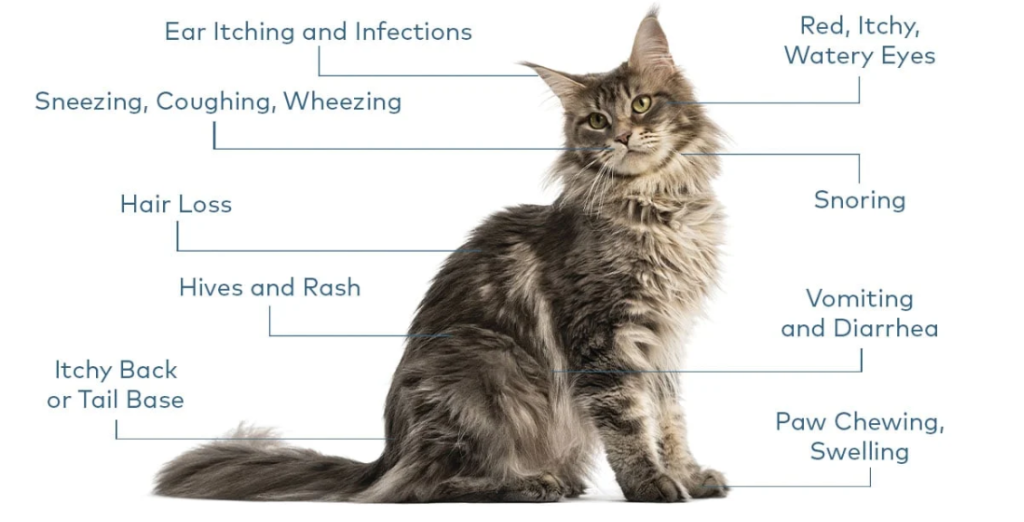
When Toni had a skin allergy, her scratching behavior increased significantly. Our vet helped diagnose the issue and recommended a treatment plan, which included dietary changes and medication. Once her allergy was under control, her scratching returned to normal levels.
Behavioral Advice
Veterinarians can also provide behavioral advice and recommend products such as pheromone diffusers that can help reduce stress and anxiety in cats.
We used a pheromone diffuser when we introduced a new kitten to our home. This helped create a calmer environment and reduced the stress-induced scratching from our older cats.
Conclusion: Embracing the Scratch:
Understanding why do cats scratch furniture is the first step in addressing this behavior. It’s a natural and necessary activity for their physical and psychological well-being. By providing appropriate alternatives, using positive reinforcement, and addressing any underlying issues, you can coexist peacefully with your feline friends without sacrificing your furniture. As a cat owner, it’s important to embrace their instincts and find solutions that work for both you and your cats. With patience and understanding, you can create a harmonious living environment for everyone.
Scratching is an integral part of a cat’s life. It’s how they express themselves, maintain their health, and interact with their environment. By recognizing the reasons behind this behavior and taking proactive steps, you can ensure that both your cats and your furniture can coexist in harmony. Remember, every scratch is a form of communication and care from your beloved pet. Embrace it, manage it, and you will find a deeper connection with your feline companions.



